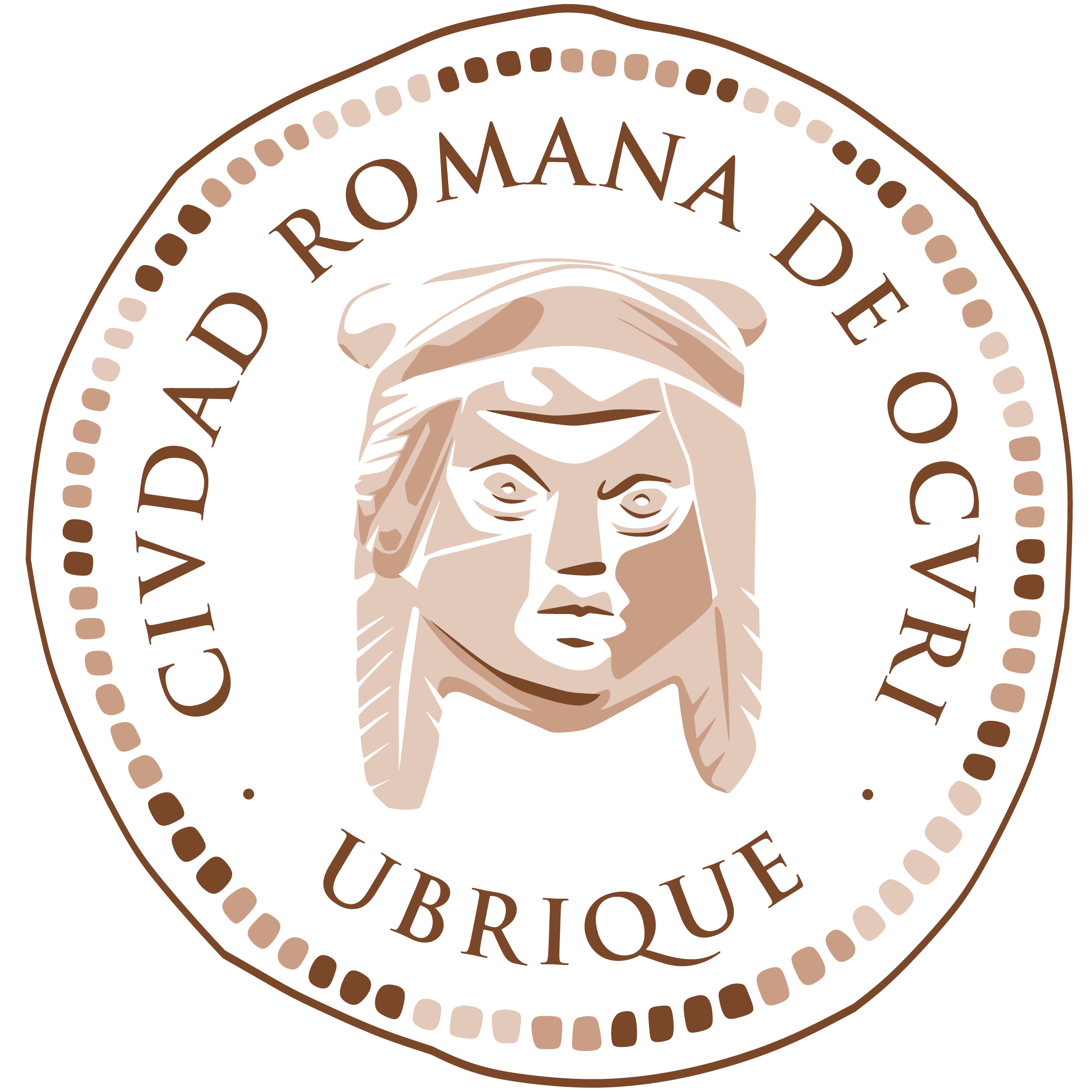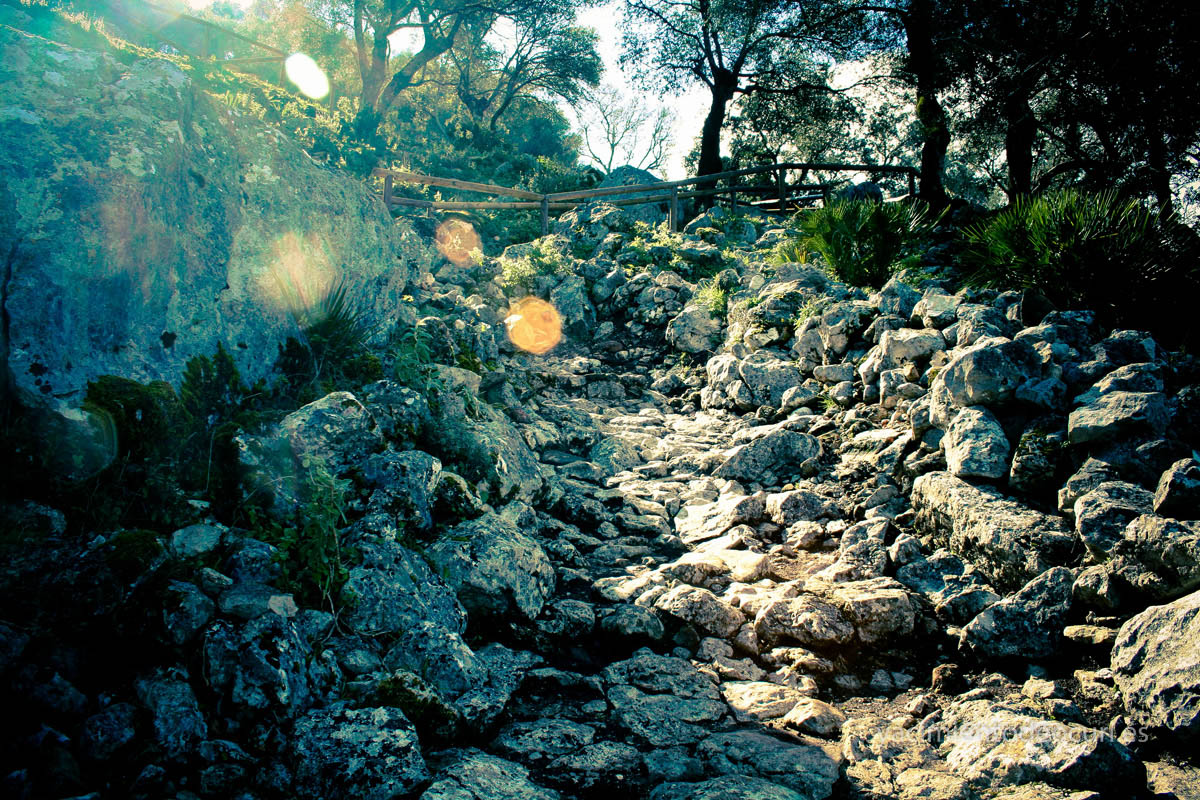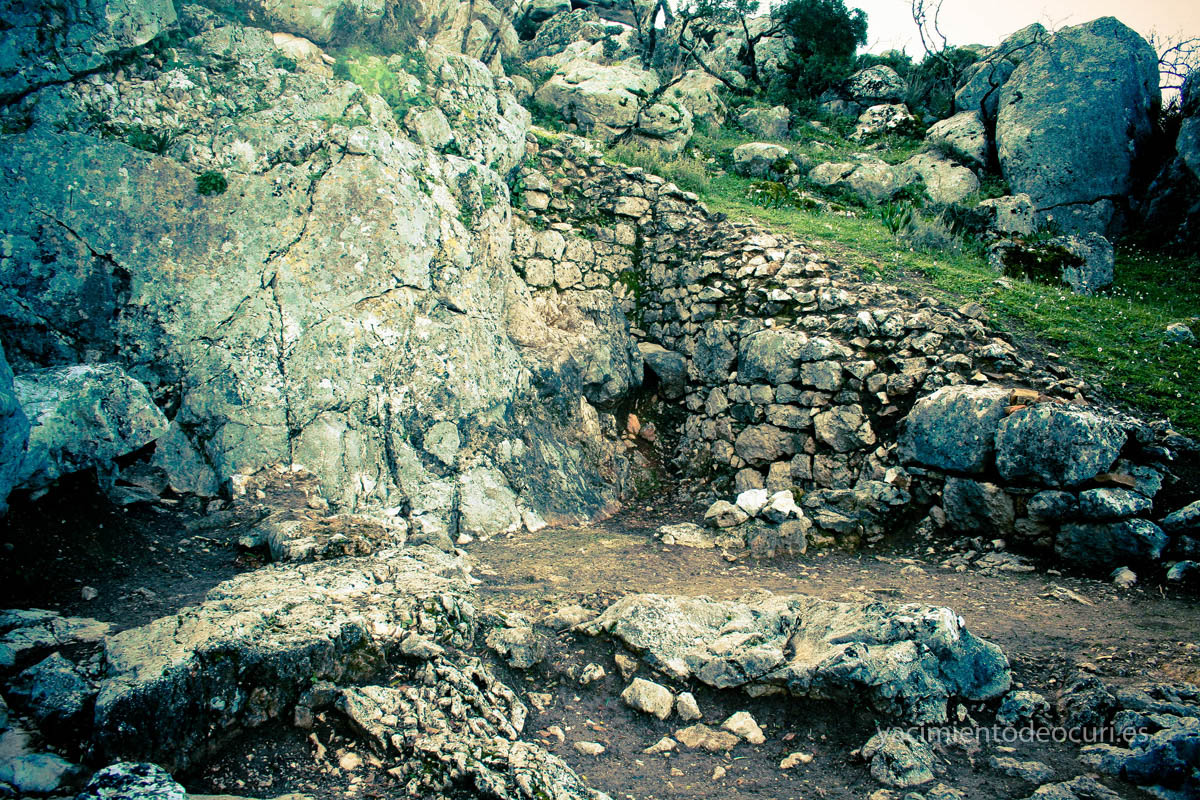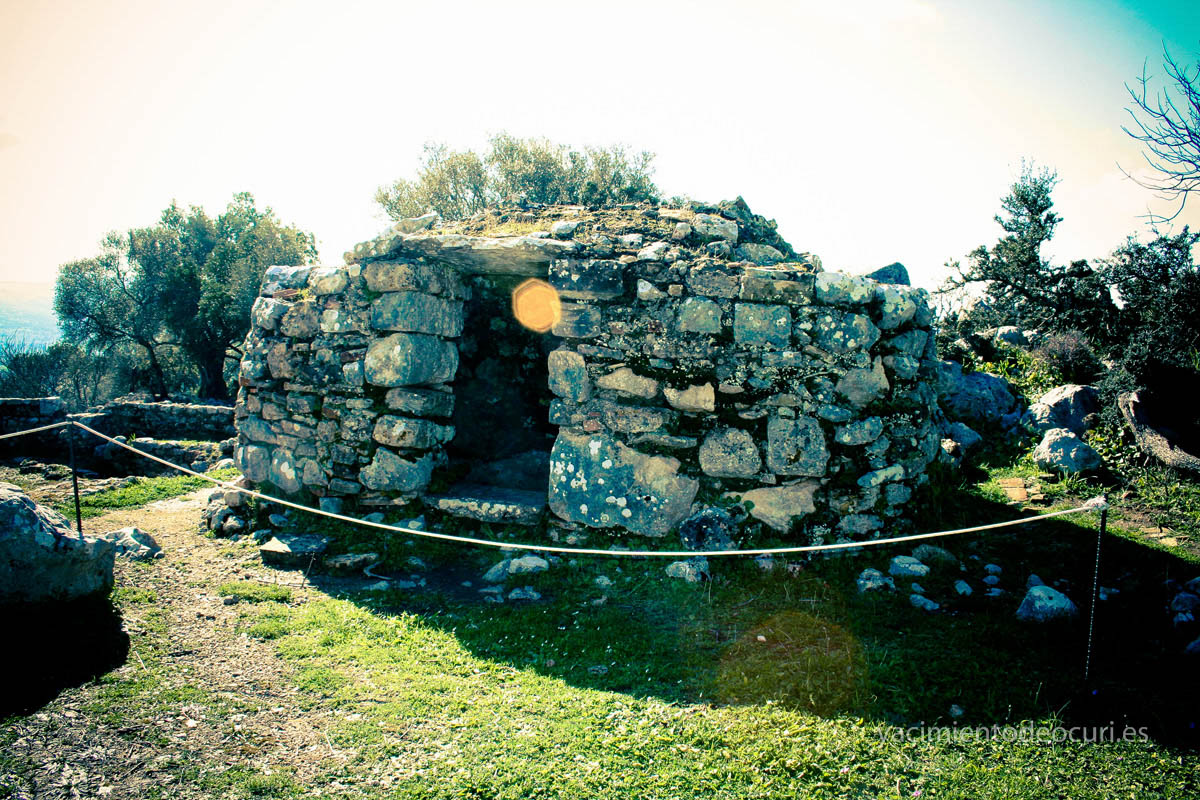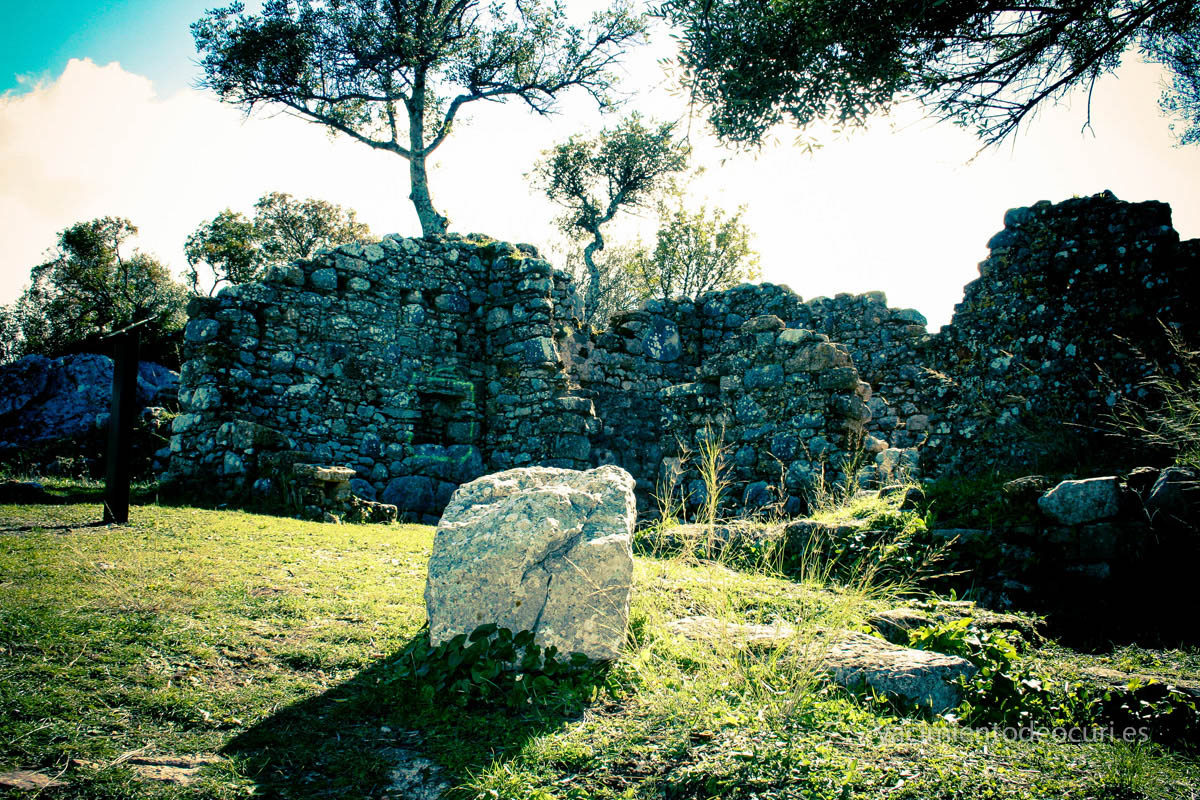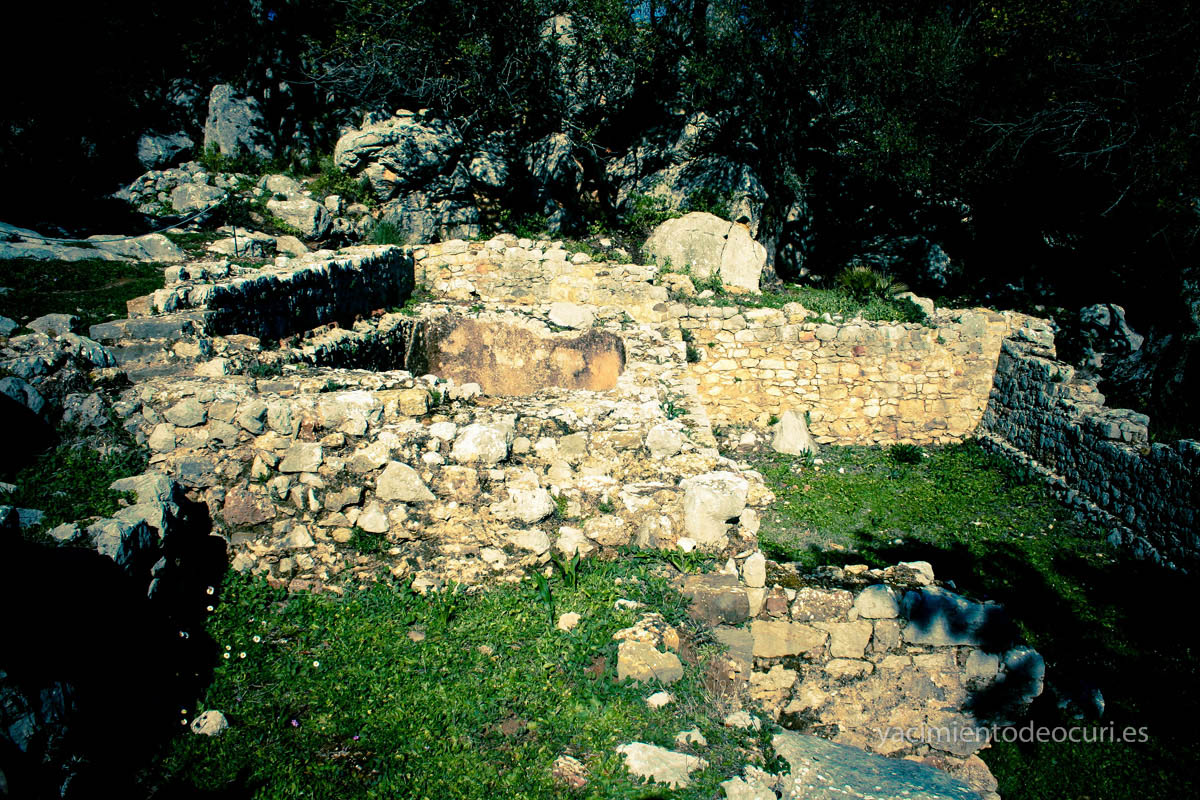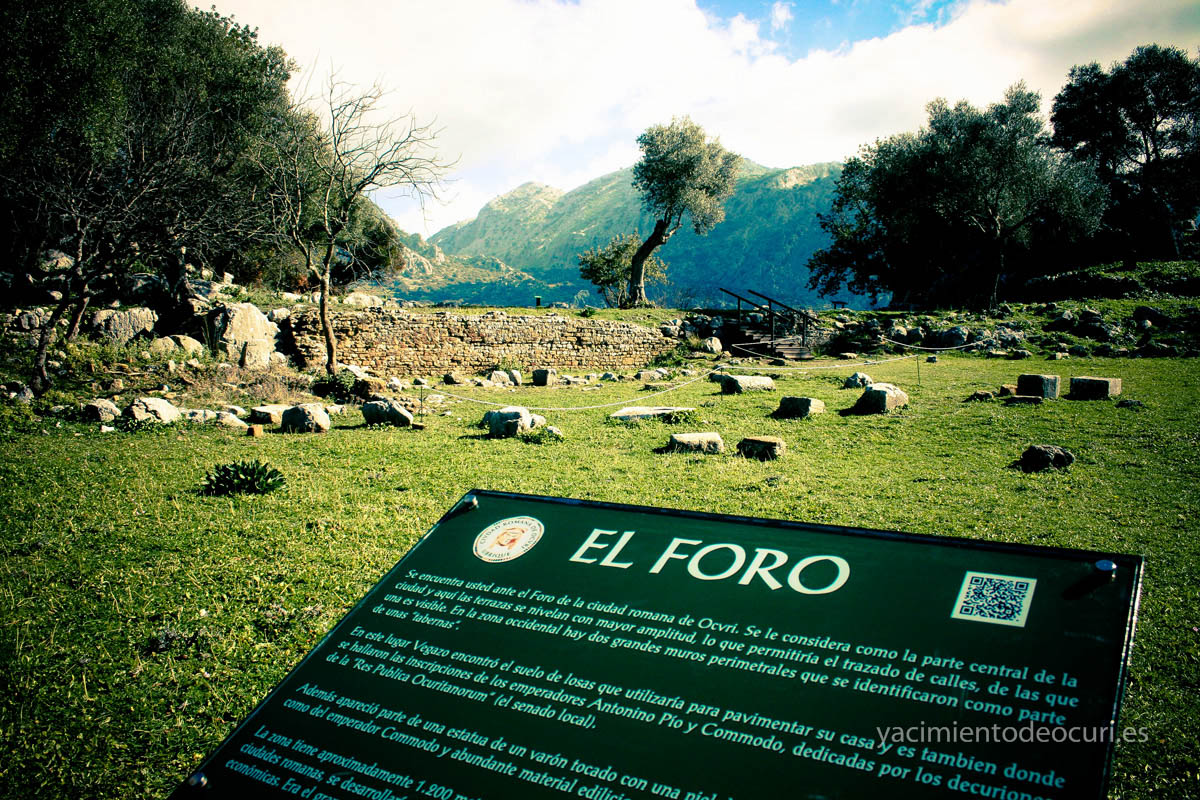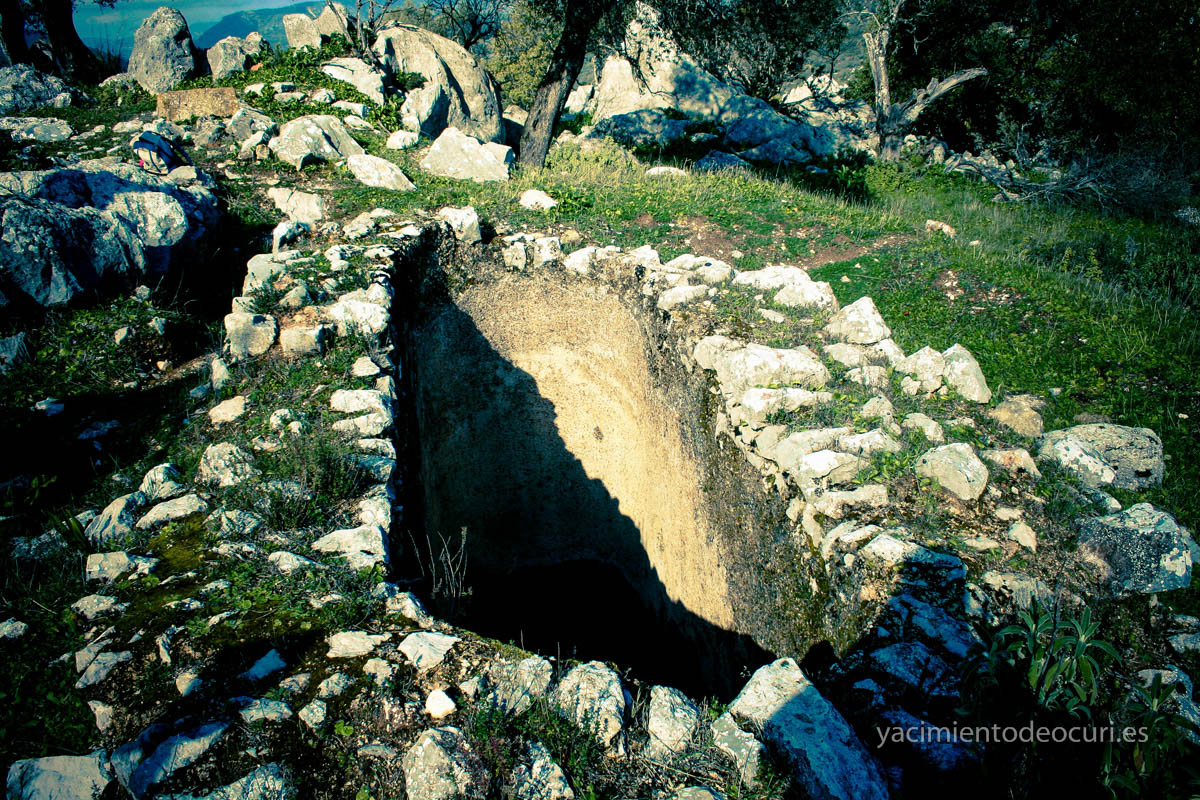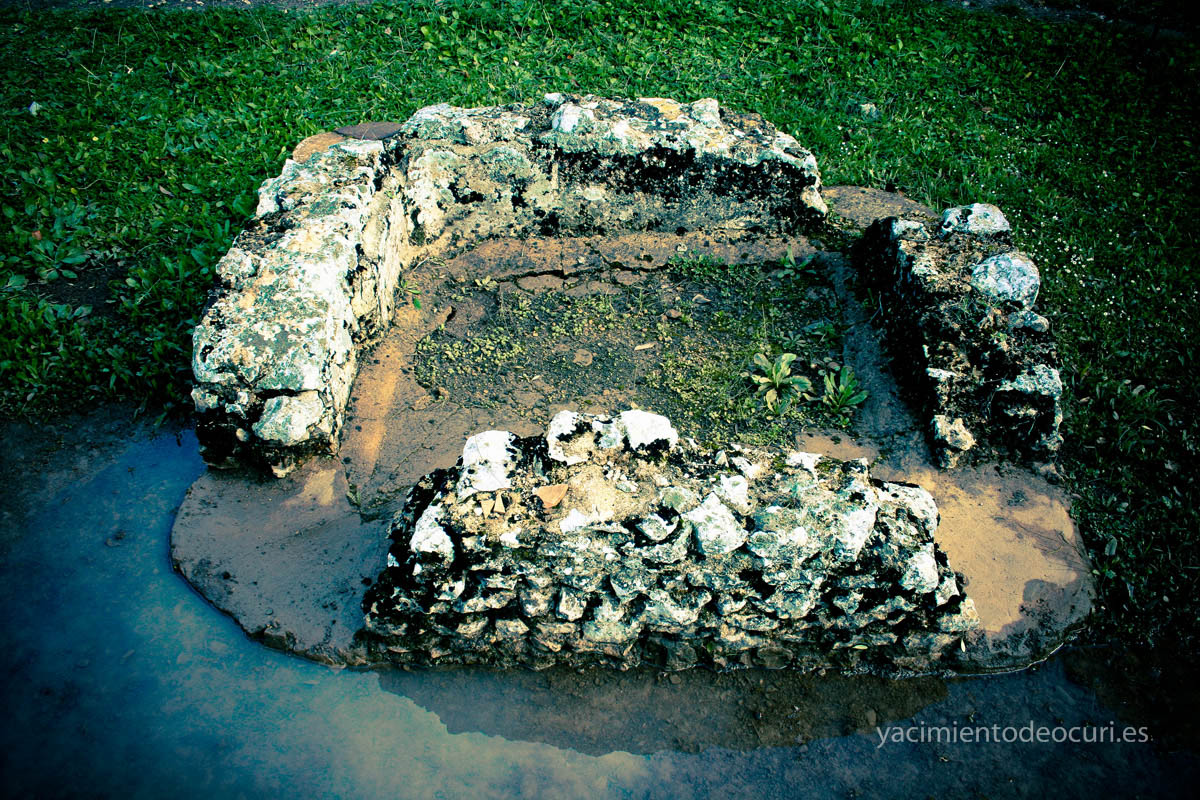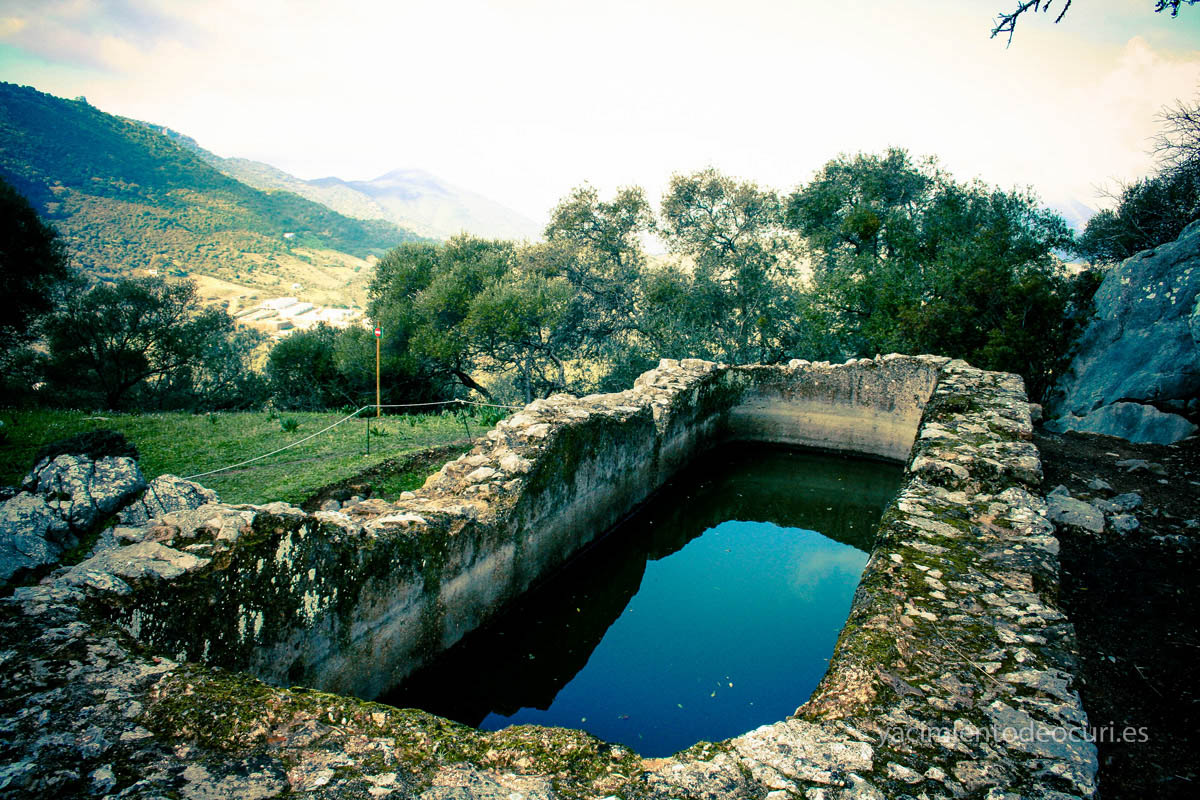Discover the archaeological site of Ocuri and immerse yourself in a fascinating history.
The discovery of this important archaeological site was made at the end of the 18th century thanks to the intuition of a local named Juan Vegazo, who bought the land in order to see if the remains that could be seen on that hill could be compared to those of Pompeii itself. Vegazo, a true pioneer of archaeological fieldwork, excavated several of the structures and left a written record of his discoveries, including two magnificent epigraphs dedicated to the emperors Antoninus Pius and Commodus, which contained the name of the city, unknown until then.
Although recent research has established its origins in at least the 6th century BC, the vast majority of the remains that have emerged correspond to the Roman period of the city, with a period of maximum splendour in the 2nd century AD. Outside the city walls, as dictated by Roman sanitary laws, are the necropolis and its most important monument: the mausoleum, without precedents in Andalusia. Inside are a series of niches where the urns containing the ashes of the deceased were placed, as well as offerings from relatives and possibly statues.
This is followed by its cyclopean wall of Iberian origin, which has been modified on several occasions and in which canvases made “a hueso” (without mortar) have been preserved and others with moulded ashlars that may date from the Carthaginian period. In the 1st or 2nd century AD the entrance was modified to give it a monumental character.
Behind the wall, various constructive remains can be seen, such as several cisterns with a large reservoir capacity, the forum with part of its “taverns”, the remains of houses and public buildings and above all, in the upper area, the impressive “thermal baths”. The Roman city of Ocuri must have been part of the “coventus iuridicus gaditanus”, an administrative body belonging to the imperial province of “Baetica” in the early imperial period.
For the conservation and enhancement of the cultural, historical and artistic heritage of Andalusia, as well as for its archaeological interest, strengthening the awareness of Andalusian identity and culture, the Directorate General of Historical and Documentary Heritage, through the Resolution of 28 March 2022, initiates the procedure for the inscription in the General Catalogue of Andalusian Historical Heritage, as an Asset of Cultural Interest (BIC), with the typology of Archaeological Zone, of the site called Ocuri, located in Ubrique (Cadiz). More information at www.juntadeandalucia.es/boja/2022/65/26.
Access to the site is only possible with guided tours during the established times for the protection of the historical and natural heritage.
Follow us on Social Media
You can keep up to date with the main news about the Ocuri Archaeological Site on our Facebook and Twitter profiles.
